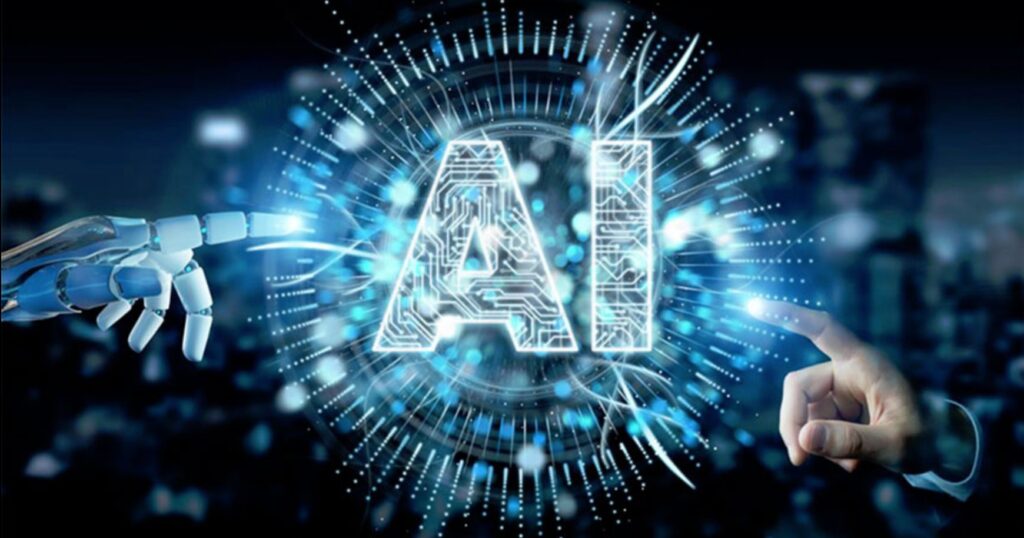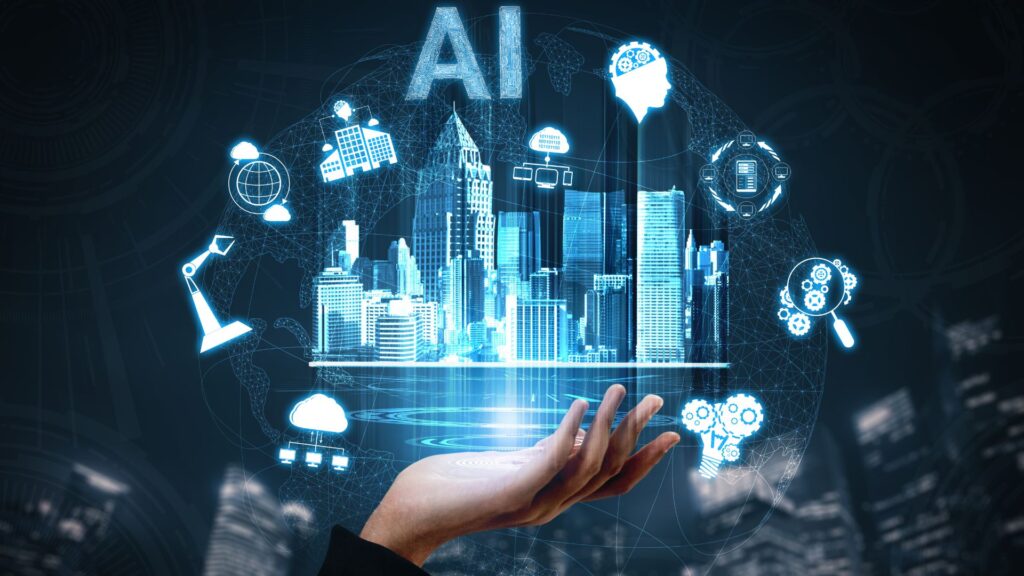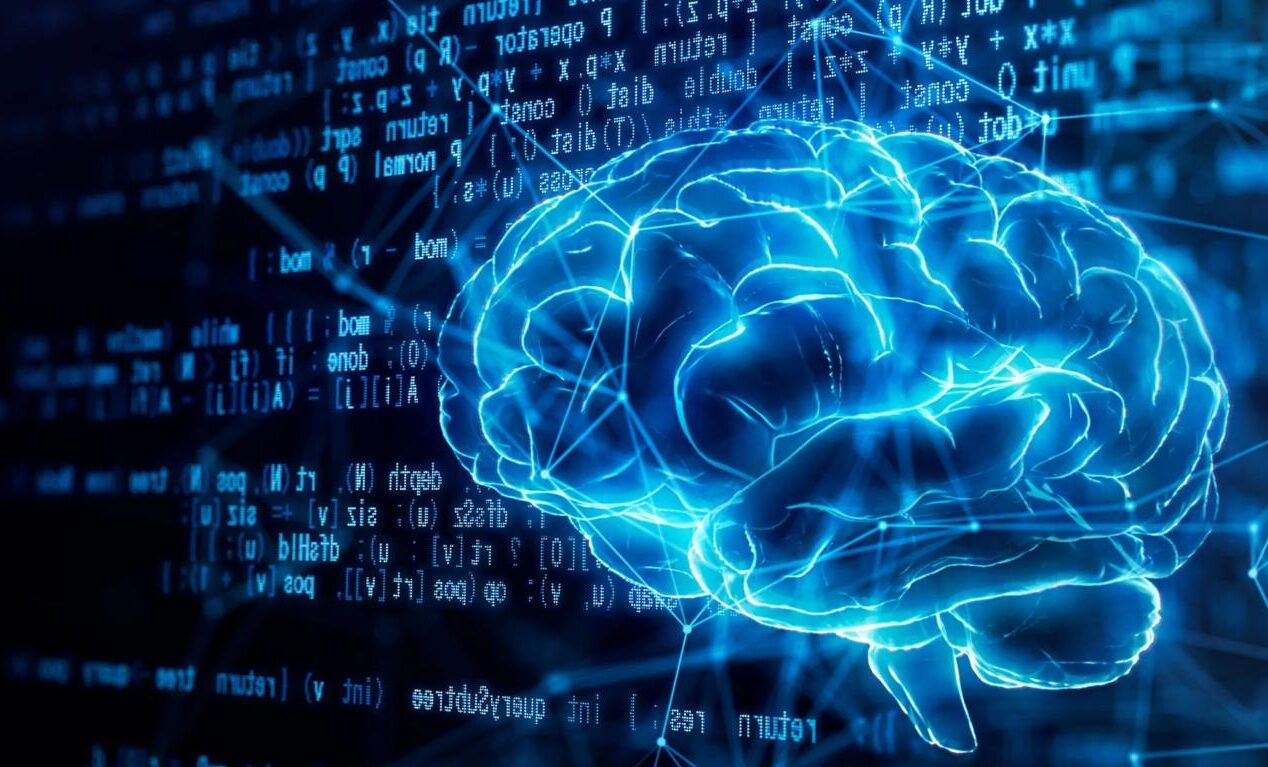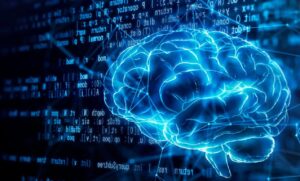The Age of Intelligence: Understanding AI and Technology in the Modern World (Part 3-Final)
AI and Environmental Sustainability
As the world grapples with pressing environmental challenges, artificial intelligence (AI) emerges as a powerful tool capable of addressing complex issues related to climate change, resource management, and conservation. By harnessing data-driven insights and predictive analytics, AI technologies can optimize processes, enhance decision-making, and foster sustainable practices across various sectors. This chapter will explore the transformative applications of AI in environmental sustainability, focusing on climate modeling, energy management, waste reduction, and biodiversity conservation.
AI in Climate Change Mitigation
Climate change is one of the most significant threats facing humanity, and AI has the potential to play a pivotal role in mitigating its impacts. AI technologies can enhance climate modeling and prediction, improve resource allocation, and drive the transition to renewable energy sources.
- Climate Modeling and Prediction:
AI algorithms can analyze vast amounts of climate data, including temperature, precipitation patterns, and atmospheric composition, to improve climate models. By identifying complex patterns and correlations, AI can enhance the accuracy of climate predictions, enabling policymakers to make informed decisions regarding climate action. For example, researchers have used AI to predict extreme weather events, such as hurricanes and heatwaves, providing valuable lead time for disaster preparedness. - Carbon Emission Monitoring:
AI technologies can monitor and analyze carbon emissions from various sources, helping governments and organizations track their progress in reducing greenhouse gas emissions. Machine learning models can analyze data from satellites, ground sensors, and industrial processes to identify emission hotspots and assess compliance with environmental regulations. This information can inform policy decisions and drive efforts to achieve carbon neutrality. - Optimizing Resource Allocation:
AI can optimize resource allocation for climate resilience initiatives, such as disaster response and recovery efforts. By analyzing historical data and real-time information, AI algorithms can identify vulnerable regions and prioritize interventions, ensuring that resources are allocated where they are needed most.

AI in Energy Management
The transition to renewable energy sources is essential for combating climate change, and AI technologies can facilitate this transition by optimizing energy production, consumption, and distribution.
- Smart Grids:
AI can enhance the efficiency of smart grids by optimizing the integration of renewable energy sources, such as solar and wind. Machine learning algorithms can predict energy demand patterns, enabling grid operators to balance supply and demand in real-time. By analyzing data from smart meters and sensors, AI can help reduce energy waste and improve grid reliability. - Energy Efficiency:
AI technologies can optimize energy consumption in buildings and industrial processes. For instance, AI-driven systems can analyze data from smart thermostats, lighting controls, and HVAC systems to identify opportunities for energy savings. By dynamically adjusting energy usage based on occupancy and environmental conditions, AI can significantly reduce energy costs and emissions. - Predictive Maintenance:
In the context of renewable energy infrastructure, such as wind turbines and solar panels, AI can facilitate predictive maintenance by analyzing sensor data to identify potential equipment failures before they occur. By proactively addressing maintenance needs, operators can minimize downtime and improve the efficiency of energy production.
AI in Waste Management
Waste management poses significant challenges for urban areas, and AI technologies can enhance efficiency and sustainability in waste collection, sorting, and recycling.
- Smart Waste Collection:
AI-powered systems can optimize waste collection routes based on real-time data, reducing fuel consumption and operational costs. Sensors placed in waste bins can monitor fill levels and communicate this information to waste management services, enabling them to allocate resources more effectively. - Automated Sorting and Recycling:
AI-driven robotics and computer vision technologies can improve the sorting of recyclables from waste streams. By accurately identifying and categorizing materials, AI systems can enhance recycling rates and reduce contamination in recycling processes. For instance, AI-powered sorting machines can identify plastics, metals, and paper products, ensuring that they are processed correctly. - Waste-to-Energy Conversion:
AI can optimize waste-to-energy conversion processes, where organic waste is transformed into biogas or biofuel. Machine learning algorithms can analyze feedstock characteristics and operational parameters to maximize energy recovery while minimizing emissions.
AI in Biodiversity Conservation
Biodiversity loss is a pressing global issue, and AI technologies can contribute to conservation efforts by monitoring ecosystems, protecting endangered species, and supporting sustainable land use practices.
- Wildlife Monitoring:
AI-powered camera traps and drones equipped with computer vision can monitor wildlife populations and track endangered species. By analyzing images and videos, AI algorithms can identify individual animals, track their movements, and assess population health. This information is crucial for developing effective conservation strategies. - Habitat Mapping and Analysis:
AI can facilitate habitat mapping by analyzing satellite imagery and remote sensing data. Machine learning algorithms can identify land cover changes, deforestation, and habitat fragmentation, enabling conservationists to prioritize areas for protection and restoration. - Predictive Modeling for Conservation Planning:
AI-driven predictive models can assess the potential impacts of climate change and land use changes on biodiversity. By simulating different scenarios, conservationists can identify strategies to mitigate risks and enhance ecosystem resilience.

AI in Sustainable Agriculture
Agriculture is a critical sector for sustainability, and AI technologies can optimize farming practices, improve yields, and reduce environmental impacts.
- Precision Agriculture:
AI-driven precision agriculture utilizes data from sensors, drones, and satellite imagery to optimize crop management practices. By analyzing soil conditions, weather patterns, and crop health, farmers can make data-driven decisions regarding irrigation, fertilization, and pest control. This approach minimizes resource waste and enhances productivity. - Crop Disease Detection:
AI can aid in the early detection of crop diseases by analyzing images of plants and identifying symptoms. Machine learning models can be trained to recognize patterns associated with various diseases, enabling farmers to take timely action and minimize crop losses. - Sustainable Resource Management:
AI technologies can help farmers manage water and nutrient inputs more sustainably. By analyzing data on soil moisture, weather forecasts, and crop requirements, AI systems can optimize irrigation schedules and fertilizer application, reducing environmental impacts and conserving resources.
Ethical Considerations in AI for Sustainability
While AI offers tremendous potential for enhancing environmental sustainability, ethical considerations must be addressed to ensure responsible deployment.
- Data Privacy and Ownership:
The collection of environmental data raises questions about privacy and ownership. As organizations gather data from various sources, including IoT devices and citizen reporting, it is essential to establish clear guidelines regarding data usage and ownership, ensuring that individuals and communities retain control over their information. - Equity and Access:
The benefits of AI technologies in sustainability should be accessible to all communities, particularly marginalized populations that are disproportionately affected by environmental challenges. Efforts must be made to ensure that AI-driven solutions do not exacerbate existing inequalities and that all stakeholders have a voice in decision-making processes. - Transparency and Accountability:
AI systems should be transparent in their operations and decision-making processes. Stakeholders should be able to understand how AI technologies are used in environmental initiatives and hold organizations accountable for their impact. Engaging with communities and fostering collaboration can enhance transparency and build trust.
Harnessing AI for a Sustainable Future
Artificial intelligence holds immense promise for addressing the pressing environmental challenges of our time. From climate change mitigation to sustainable agriculture and biodiversity conservation, AI technologies can enhance decision-making, optimize resource use, and promote sustainable practices across various sectors. However, as we harness the power of AI for sustainability, it is crucial to navigate ethical considerations responsibly and ensure that the benefits are shared equitably.
In the next chapter, we will explore the intersection of AI and ethics in greater depth, examining the principles that should guide the responsible development and deployment of AI technologies. By understanding the ethical framework surrounding AI, we can foster a future where technology serves the greater good.

The Ethical Framework for AI Development
As artificial intelligence continues to evolve and permeate various aspects of society, the need for a robust ethical framework to guide its development and deployment becomes increasingly critical. The ethical considerations surrounding AI encompass a wide range of issues, including fairness, accountability, transparency, privacy, and the potential for unintended consequences. This chapter will explore the key principles that should inform the ethical development of AI technologies, the challenges in implementing these principles, and the role of stakeholders in fostering responsible AI practices.
Principles of Ethical AI Development
To navigate the complexities of AI ethics, several guiding principles have emerged that can help shape the responsible development and deployment of AI technologies.
- Fairness:
Fairness is a fundamental principle in AI ethics, emphasizing the need to ensure that AI systems treat all individuals equitably and do not perpetuate existing biases or inequalities. Developers must strive to eliminate algorithmic bias by employing diverse datasets and inclusive design practices. This involves conducting regular audits and assessments to identify and mitigate bias in AI algorithms. - Accountability:
Accountability in AI development requires that organizations and individuals take responsibility for the outcomes of their AI systems. This includes establishing clear lines of accountability for decision-making processes and ensuring that there are mechanisms in place to address any harm caused by AI technologies. Organizations should implement governance structures that prioritize ethical considerations and allow for oversight and redress when necessary. - Transparency:
Transparency is essential for building trust in AI systems. Developers should strive to make AI algorithms and decision-making processes understandable to users and stakeholders. This includes providing clear information about how data is collected, how algorithms function, and how decisions are made. Transparency fosters informed consent and empowers users to engage with AI technologies meaningfully. - Privacy:
Respecting user privacy is a cornerstone of ethical AI development. Organizations must prioritize data protection and ensure that user information is collected, stored, and processed in compliance with relevant regulations. This includes obtaining informed consent from users and providing them with control over their data. Privacy measures must be integrated into AI systems from the outset, rather than retrofitted after development. - Safety and Security:
Ensuring the safety and security of AI systems is critical to preventing harm to individuals and society. Developers should prioritize robust testing and validation of AI technologies to identify and mitigate potential risks. Additionally, cybersecurity measures must be implemented to protect AI systems from malicious attacks and exploitation.
Challenges in Implementing Ethical AI Principles
While the principles of ethical AI development provide a valuable framework, several challenges arise in their implementation.
- Complexity of AI Systems:
The complexity of AI algorithms, particularly deep learning models, can make it difficult to achieve transparency and accountability. These “black box” systems may produce outputs that are difficult to interpret, complicating efforts to understand how decisions are made. Developing explainable AI models that offer insights into their decision-making processes is essential for addressing this challenge. - Data Quality and Representation:
The quality and representativeness of training data play a significant role in the fairness and accuracy of AI systems. If the data used to train algorithms is biased or incomplete, the resulting AI systems may perpetuate existing inequalities. Ensuring diverse and representative datasets while maintaining data quality is a complex and ongoing challenge. - Balancing Competing Interests:
The development of AI technologies often involves balancing competing interests, such as innovation, profit, and ethical considerations. Organizations may face pressure to prioritize speed and cost-effectiveness over ethical principles, leading to compromises in responsible AI practices. Fostering a culture of ethical awareness within organizations is crucial to navigating these competing demands.

The Role of Stakeholders in Ethical AI Development
The responsibility for ethical AI development extends beyond individual organizations; it involves a collaborative effort among various stakeholders, including developers, policymakers, industry leaders, researchers, and society at large.
- Developers and Organizations:
AI developers and organizations have a primary role in ensuring that ethical principles are integrated into the design and deployment of AI systems. This includes conducting ethical assessments, implementing best practices, and fostering a culture of accountability and transparency within their teams. - Policymakers and Regulators:
Policymakers play a vital role in establishing regulatory frameworks that promote ethical AI development. By creating guidelines and standards that prioritize fairness, accountability, and transparency, governments can help shape the landscape for responsible AI deployment. Collaboration between policymakers and industry stakeholders is essential to ensure that regulations are practical and effective. - Academia and Researchers:
Researchers contribute to the ethical discourse surrounding AI by studying the societal implications of AI technologies and developing frameworks for responsible AI practices. Academic institutions can also play a role in educating the next generation of AI practitioners about ethical considerations, fostering a culture of ethical awareness in future professionals. - Society and Civil Society Organizations:
Civil society organizations and advocacy groups play a crucial role in holding organizations accountable for their AI practices. By raising awareness of ethical issues and advocating for marginalized communities, these organizations can influence policy and promote responsible AI development. Engaging with the public and incorporating diverse perspectives is essential for ensuring that AI technologies serve the broader good.
Case Studies in Ethical AI Development
Examining real-world case studies can provide valuable insights into the implementation of ethical AI principles and the challenges faced by organizations.
- Facial Recognition Technology:
The deployment of facial recognition technology has raised significant ethical concerns, particularly regarding privacy, surveillance, and bias. Several cities and countries have implemented bans or restrictions on the use of this technology, citing concerns about its potential to infringe on civil liberties and disproportionately impact marginalized communities. These cases highlight the importance of considering ethical implications before deploying AI technologies. - AI in Hiring Processes:
Many organizations have adopted AI-driven tools for recruitment and hiring, aiming to streamline processes and reduce bias. However, instances of bias in these algorithms have been documented, leading to calls for greater transparency and accountability in AI hiring practices. Companies that have faced backlash have begun to implement fairness checks and audits to ensure that their hiring algorithms are free from discrimination. - Healthcare AI:
AI technologies in healthcare offer immense potential, but ethical considerations are paramount. For instance, the use of AI in medical diagnostics must be accompanied by transparency regarding how algorithms are developed and validated. Ensuring that AI systems are free from bias and that they respect patient privacy is critical for maintaining trust in healthcare delivery.
Towards Ethical AI for the Future
The ethical development of artificial intelligence is essential for unlocking its potential to benefit society while minimizing harm. By adhering to principles of fairness, accountability, transparency, privacy, and safety, stakeholders can create AI systems that align with societal values and priorities. While challenges exist in implementing these principles, a collaborative approach involving developers, policymakers, researchers, and civil society can pave the way for responsible AI practices.
As we move forward, fostering a culture of ethical awareness and continuous dialogue around AI technologies will be critical in shaping a future where AI serves the greater good.
In the next chapter, we will explore the role of AI in enhancing education, examining how AI technologies are transforming teaching and learning experiences. By understanding these advancements, we can evaluate the potential of AI to improve educational outcomes and prepare future generations for a rapidly changing world.

AI in Education: Transforming Learning Experiences
Artificial intelligence is rapidly reshaping the educational landscape, offering innovative solutions to enhance teaching and learning experiences. From personalized learning paths to intelligent tutoring systems, AI technologies are transforming how educators deliver instruction and how students engage with content. This chapter will explore the various applications of AI in education, including personalized learning, administrative efficiency, assessment and feedback, and the role of AI in fostering inclusive education.
Personalized Learning: Tailoring Education to Individual Needs
AI’s ability to analyze vast amounts of data allows for the creation of personalized learning experiences that cater to the unique needs of each student. Personalized learning strategies enable educators to deliver instruction that aligns with students’ strengths, weaknesses, and learning styles.
- Adaptive Learning Technologies:
Adaptive learning platforms leverage AI algorithms to assess students’ knowledge and skills in real-time. These systems can adjust the difficulty level of tasks and provide customized resources based on individual performance. For instance, if a student struggles with a particular concept in mathematics, the platform can offer additional practice problems and tutorials tailored to that student’s needs. - Learning Analytics:
AI-driven learning analytics tools can analyze student data to identify patterns in learning behavior and performance. Educators can use these insights to make data-informed decisions about instructional strategies, identify at-risk students, and provide targeted interventions. By understanding how students engage with content, educators can create more effective learning environments. - Student Agency and Engagement:
Personalized learning fosters greater student agency, allowing learners to take control of their educational journeys. By providing students with choices in their learning paths and allowing them to pursue topics of interest, AI technologies can enhance motivation and engagement, leading to improved educational outcomes.
Administrative Efficiency: Streamlining Educational Processes
AI technologies can significantly enhance administrative efficiency within educational institutions, allowing educators to focus more on teaching and less on administrative tasks.
- Automated Administrative Tasks:
AI applications can automate routine administrative tasks, such as scheduling, enrollment management, and grading. For instance, AI-driven scheduling systems can optimize class schedules based on student course preferences and availability, minimizing conflicts and maximizing resource utilization. - Chatbots for Student Support:
AI-powered chatbots can provide 24/7 support to students, answering common questions about enrollment, course requirements, and academic resources. By offering immediate assistance, chatbots can alleviate the administrative burden on staff and improve the overall student experience. - Data Management and Reporting:
AI systems can streamline data management processes, allowing educators and administrators to access and analyze student performance data more efficiently. Automated reporting tools can generate insights that inform decision-making and facilitate communication with stakeholders.
Assessment and Feedback: Enhancing Evaluation Methods
AI technologies are revolutionizing assessment and feedback practices, making them more efficient and effective.
- Intelligent Tutoring Systems:
Intelligent tutoring systems employ AI algorithms to provide personalized instruction and feedback to students. These systems can offer real-time guidance as students work through problems, identifying misconceptions and providing targeted support. For example, platforms like Carnegie Learning use AI to adapt math instruction based on individual student performance, offering hints and explanations tailored to each learner. - Automated Grading:
AI can streamline the grading process by automating the evaluation of assignments, quizzes, and exams. Natural language processing techniques enable AI systems to assess written responses, providing timely feedback to students. This allows educators to focus on more complex aspects of assessment, such as providing qualitative feedback and fostering student discussions. - Formative Assessment:
AI-driven formative assessment tools can continuously monitor student progress and provide real-time feedback. By analyzing student interactions with learning materials, these tools can identify areas where students may need additional support, allowing educators to intervene proactively.
Fostering Inclusive Education: Supporting Diverse Learners
AI technologies can play a vital role in fostering inclusive education by supporting diverse learners and addressing barriers to learning.
- Assistive Technologies:
AI-powered assistive technologies can enhance accessibility for students with disabilities. For instance, speech recognition software can support students with writing difficulties, while text-to-speech applications can assist students with visual impairments. These technologies empower all learners to participate fully in the educational process. - Language Support:
AI language translation tools can help bridge language barriers for English language learners (ELLs) by providing real-time translations of instructional materials. This support enables ELLs to access content more effectively and participate actively in classroom discussions. - Culturally Responsive Learning:
AI can facilitate culturally responsive education by analyzing student data to identify cultural backgrounds and learning preferences. Educators can then tailor instruction to reflect the diverse experiences and perspectives of their students, fostering a more inclusive learning environment.
Ethical Considerations in AI-Driven Education
While the potential benefits of AI in education are substantial, ethical considerations must be addressed to ensure that AI technologies are developed and deployed responsibly.
- Data Privacy and Security:
The collection and analysis of student data raise concerns about privacy and security. Educational institutions must prioritize data protection measures to safeguard sensitive student information. Compliance with regulations such as the Family Educational Rights and Privacy Act (FERPA) is essential to maintaining trust and protecting student rights. - Equity and Access:
Ensuring equitable access to AI technologies is critical for preventing disparities in educational outcomes. Schools must address the digital divide to ensure that all students have access to the necessary devices and internet connectivity to benefit from AI-driven educational resources. - Bias in AI Systems:
AI algorithms can inadvertently perpetuate biases present in training data. Developers must be vigilant in selecting diverse and representative datasets to minimize the risk of bias in AI applications. Ongoing monitoring and evaluation of AI systems are essential to identify and address potential biases that may affect student outcomes.
The Future of AI in Education
AI technologies offer transformative potential for enhancing education by personalizing learning experiences, streamlining administrative processes, and fostering inclusivity. As we embrace the opportunities presented by AI in education, it is crucial to navigate ethical considerations responsibly and ensure that all students benefit from these advancements.
In the next chapter, we will explore the future of AI and its implications for society, examining the challenges and opportunities that lie ahead as we integrate AI technologies into our daily lives. By understanding the
broader societal implications of AI, we can prepare for a future that harnesses the power of AI for the greater good.
The Future of AI: Opportunities and Challenges for Society
As artificial intelligence becomes increasingly integrated into our daily lives, its implications extend far beyond technological advancements. The future of AI presents both opportunities for innovation and growth, as well as challenges that require careful consideration and proactive management. This chapter will explore the potential benefits of AI across various sectors, the ethical and societal challenges it poses, and the collaborative efforts needed to navigate this evolving landscape.
Opportunities Presented by AI
The transformative capabilities of AI offer significant opportunities across multiple domains, enhancing productivity, driving innovation, and improving quality of life.
- Economic Growth and Job Creation:
AI has the potential to drive substantial economic growth by enhancing productivity and efficiency in various industries. According to a report by PwC, AI could contribute up to $15.7 trillion to the global economy by 2030. While there are concerns about job displacement due to automation, AI also creates new job categories that require human oversight, creativity, and emotional intelligence. For example, roles in AI ethics, data analysis, and machine learning development are likely to see increased demand. - Advancements in Healthcare:
AI technologies are revolutionizing healthcare by improving diagnostics, personalizing treatment, and streamlining administrative processes. Innovations such as AI-powered imaging tools, predictive analytics for patient outcomes, and telemedicine applications are enhancing the efficiency and effectiveness of healthcare delivery. As AI continues to evolve, it holds the promise of improving health outcomes and reducing costs. - Enhanced Decision-Making:
AI can augment human decision-making processes by providing data-driven insights and predictive analytics. In fields such as finance, marketing, and supply chain management, AI systems can analyze vast datasets to identify trends and forecast outcomes, enabling organizations to make informed strategic decisions. This ability to harness data can lead to more effective resource allocation and improved organizational performance. - Sustainable Solutions:
AI technologies can contribute to addressing global challenges, such as climate change, resource management, and public health crises. By optimizing energy consumption, predicting natural disasters, and enhancing agricultural practices, AI can support sustainable development and help mitigate the effects of environmental degradation.

Challenges Posed by AI
Despite its potential benefits, the rapid advancement of AI also presents significant challenges that must be addressed to ensure that its implementation is ethical and equitable.
- Ethical Dilemmas:
The deployment of AI raises ethical dilemmas related to privacy, bias, and accountability. For instance, the use of facial recognition technology in law enforcement has sparked debates about surveillance, civil liberties, and the potential for racial bias. Organizations must navigate these ethical complexities by prioritizing transparency, fairness, and accountability in their AI practices. - Job Displacement and Workforce Transformation:
The automation of routine tasks may lead to job displacement in certain sectors, particularly those involving repetitive or low-skill tasks. While AI will create new job opportunities, the transition may not be smooth, and workers in affected industries may face significant challenges. To mitigate the impact of job displacement, reskilling and upskilling initiatives are essential to help workers adapt to the changing job market. - Data Privacy Concerns:
The collection and analysis of personal data by AI systems raise concerns about privacy and data security. Misuse of data or breaches can have serious consequences for individuals and organizations. Ensuring robust data protection measures and compliance with regulations is critical for maintaining trust in AI technologies. - Inequality in Access to Technology:
The benefits of AI may not be equitably distributed, leading to disparities in access and outcomes. Marginalized communities may face barriers to accessing AI-driven resources, exacerbating existing inequalities. Efforts must be made to ensure that AI technologies are accessible to all, regardless of socioeconomic status or geographic location.
Collaborative Approaches to AI Governance
Navigating the complexities of AI requires collaboration among various stakeholders, including governments, industry leaders, researchers, and civil society. A multi-stakeholder approach is essential for developing effective governance frameworks that prioritize ethical considerations and promote responsible AI practices.
- Policy Development:
Policymakers play a critical role in shaping the regulatory landscape for AI technologies. Developing comprehensive policies that address ethical considerations, data privacy, and accountability is essential for guiding responsible AI deployment. Collaboration between government agencies and industry stakeholders can help create regulations that are practical and effective. - Industry Standards and Best Practices:
Industry leaders should establish standards and best practices for ethical AI development. Collaborative initiatives, such as the Partnership on AI, bring together organizations to share knowledge, develop guidelines, and promote ethical practices in AI. By fostering a culture of responsibility within the industry, stakeholders can work together to mitigate risks and enhance trust in AI technologies. - Public Engagement and Education:
Engaging the public in discussions about AI and its implications is vital for fostering understanding and awareness. Educational initiatives can empower individuals to navigate the complexities of AI technologies and advocate for responsible practices. By promoting digital literacy and awareness of ethical issues, society can better prepare for the challenges and opportunities presented by AI.
The Path Forward: Embracing Responsible Innovation
As we look to the future of AI, embracing responsible innovation is essential for maximizing its benefits while minimizing potential risks. This involves fostering a culture of ethical awareness, promoting collaboration among stakeholders, and prioritizing the needs and rights of individuals.
- Ethical Leadership:
Organizations must cultivate ethical leadership that prioritizes responsible AI practices. Leaders should create an environment that encourages ethical considerations in decision-making and empowers employees to voice concerns about potential ethical dilemmas. - Continuous Monitoring and Evaluation:
The impact of AI technologies should be continuously monitored and evaluated to identify and address potential risks and unintended consequences. By conducting regular assessments and engaging with stakeholders, organizations can adapt their practices to align with evolving ethical standards and societal expectations. - Vision for an Inclusive Future:
The future of AI should prioritize inclusivity, ensuring that all individuals have the opportunity to benefit from technological advancements. By addressing disparities in access and promoting equitable practices, we can work towards a future where AI serves the common good and contributes to a more just society.
Shaping a Future with AI
The future of artificial intelligence holds tremendous potential for transforming society, enhancing quality of life, and solving complex challenges. However, realizing this potential requires a proactive and collaborative approach to governance, ethics, and innovation. By prioritizing fairness, accountability, and inclusivity, we can navigate the complexities of AI and shape a future that harnesses its power for the greater good.
In the final chapter, we will reflect on the journey of AI, summarizing key themes and insights from previous chapters while offering a vision for the responsible development and deployment of AI technologies in the years to come. Together, we can build a future where AI acts as a force for positive change in our world.

Reflections and a Vision for the Future of AI
As we conclude this exploration of artificial intelligence, it is essential to reflect on the journey we have undertaken, examining the profound implications of AI across various sectors, the ethical considerations that accompany its deployment, and the collaborative efforts required to navigate its complexities. This final chapter will summarize key themes from the previous chapters, highlight the transformative potential of AI, and propose a vision for its responsible development and deployment in the years to come.
Key Themes in AI Development
Throughout this book, we have identified several critical themes that underscore the transformative impact of AI on society:
- The Power of Personalization:
AI’s ability to analyze vast datasets allows for unprecedented levels of personalization across various domains, from education to healthcare. Personalization enhances user experiences, improves outcomes, and empowers individuals to take control of their learning and health journeys. - Ethical Considerations are Paramount:
The rapid advancement of AI technologies raises significant ethical questions that must be addressed to ensure responsible development. Principles such as fairness, accountability, transparency, and privacy must guide the design and deployment of AI systems to prevent harm and promote equity. - Collaboration is Essential:
Navigating the complexities of AI requires collaboration among diverse stakeholders, including governments, industry leaders, researchers, and civil society. A multi-stakeholder approach fosters shared responsibility in developing effective governance frameworks and promoting ethical practices. - Continuous Learning and Adaptation:
The field of AI is dynamic and constantly evolving, necessitating continuous learning and adaptation. Organizations must be agile in responding to emerging challenges and opportunities, conducting regular assessments, and engaging with stakeholders to inform decision-making.
The Transformative Potential of AI
Looking ahead, the transformative potential of AI is immense. By leveraging data-driven insights and innovative technologies, AI can drive positive change across various sectors:
- Healthcare Innovations:
AI will continue to revolutionize healthcare, enhancing diagnostics, personalizing treatments, and improving patient outcomes. As AI technologies evolve, their ability to analyze genomic data, predict disease outbreaks, and streamline administrative processes will reshape the healthcare landscape. - Sustainable Development:
AI can play a critical role in addressing global challenges such as climate change, resource management, and food security. By optimizing energy usage, predicting environmental changes, and enhancing agricultural practices, AI can support sustainable development initiatives and contribute to a healthier planet. - Education Transformation:
AI will transform education by personalizing learning experiences, streamlining administrative processes, and fostering inclusivity. As AI-driven tools become more integrated into classrooms, students will benefit from tailored instruction that meets their unique needs, preparing them for success in an increasingly complex world. - Economic Empowerment:
AI has the potential to drive economic growth and innovation, creating new job opportunities and enhancing productivity across industries. By embracing AI technologies, organizations can unlock new possibilities and remain competitive in a rapidly changing global economy.
A Vision for Responsible AI Development
To harness the potential of AI while addressing its challenges, we must adopt a vision for responsible AI development that prioritizes ethical considerations and societal well-being:
- Establishing Robust Governance Frameworks:
Policymakers should work collaboratively with industry stakeholders to establish comprehensive governance frameworks that prioritize ethical considerations in AI development. These frameworks should promote transparency, accountability, and fairness, ensuring that AI technologies serve the public interest. - Promoting Inclusivity and Equity:
Efforts must be made to ensure that the benefits of AI are accessible to all individuals, regardless of socioeconomic status, geographic location, or background. By fostering inclusive practices and addressing disparities in access, we can work towards a future where AI contributes to a more equitable society. - Investing in Education and Workforce Development:
To prepare future generations for an AI-driven world, we must invest in education and workforce development initiatives that emphasize digital literacy, critical thinking, and ethical awareness. By equipping individuals with the skills needed to navigate the complexities of AI, we can empower them to thrive in an evolving job market. - Encouraging Ethical Innovation:
Organizations should prioritize ethical innovation by embedding ethical considerations into their AI development processes. By fostering a culture of responsibility and encouraging employees to engage in ethical discussions, organizations can mitigate risks and enhance trust in AI technologies.
The Journey Forward with AI
As we conclude this exploration of artificial intelligence, it is clear that AI holds the potential to transform our world for the better. However, realizing this potential requires a commitment to responsible development, ethical considerations, and collaboration among stakeholders. By prioritizing fairness, accountability, transparency, and inclusivity, we can navigate the complexities of AI and build a future where technology serves as a force for positive change.
The journey forward with AI is not without its challenges, but with a shared vision and collective effort, we can harness the power of AI to create a brighter, more equitable future for all. As we embrace the opportunities presented by AI, let us remain vigilant in our commitment to ethical principles and societal well-being, ensuring that the advancements we make today pave the way for a better tomorrow.













